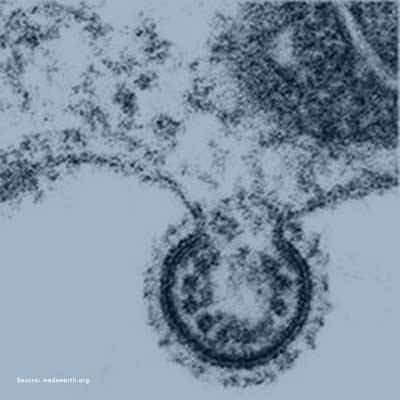
Get A Testing Quote
Respiratory Syncytial Virus
| Virus | Human Respiratory Syncytial Virus (RSV) |
| Structure | Enveloped |
| Family | Paramyxoviridae |
| Primary Host | Humans |
| Disease(s) Caused | Respiratory disease |
| Symptoms | Runny nose, Coughing, Sneezing, Fever Wheezing |
| Potential Complications | Bronchiolitis, Pneumonia |
| Transmission Mode | Airborne via respiratory droplets produced by coughing and sneezing, potential for indirect transmission via fomites |
| Sites of Community Outbreaks | Hospital wards, Daycare centers, Schools, Hospital wards, Nursing Homes |
Importance of RSV
Human respiratory syncytial virus (RSV) causes respiratory disease in people of all ages. Following an incubation period of several days, most persons experience mild symptoms such as runny nose, coughing, and sneezing, with full recovery within 1 to 2 weeks. Young children (particularly infants), the elderly, and persons afflicted with “high-risk” conditions (e.g. immuno-compromised, chronic heart/lung disease) are particularly susceptible to RSV infections and suffer from potential complications, such as bronchiolitis and pneumonia at higher rates.
RSV is transmitted primarily by way of aerosol droplets released by infected persons upon sneezing and coughing. These infective droplets are then either inhaled directly or settle upon inanimate surfaces (fomites) in the general vicinity. In the latter case (indirect transmission), contact with contaminated surfaces by hands may lead to infection if the individual subsequently rubs their eyes or nose.
The Importance of Disinfection: Survival of RSV on Surfaces and Transmission Potential via Fomites
Respiratory syncytial virus is enveloped in structure and relative to other respiratory viruses both enveloped (e.g. human coronaviruses) and non-enveloped (e.g. rhinoviruses), it loses infectivity more rapidly on inanimate surfaces (2) . However, it has been shown to maintain viability on hard, nonporous surfaces for up to 8 hours. In addition, RSV can survive on skin for up to 20 minutes and transmission has been demonstrated from contaminated fomites to hands (3).
In addition to a relatively higher surface inactivation rate, RSV is also readily rendered non-infective by a number of disinfectant actives. After only a 1-minute contact time, sodium hypochorite (0.1%), chlorhexadine digluconate (1.0%), and benzylakonium chloride (1.0%) demonstrated complete virucidal efficacy against RSV (1). Visual assessment (electron microscopy) of the viruses post-disinfection revealed a loss of virulence factors (i.e. surface glycoproteins) and heavy damage to the viral envelope.
References
- Ansaldi, F. et al. 2004. SARS-CoV, influenza A and syncytial respiratory virus resistance against common disinfectants and ultraviolet radiation. Journal of Preventative Medicine and Hygiene. 45: 5-8.
- Boone, S.A. and C.P. Gerba. 2007. Significanace of fomites in the spread of respiratory and enteric viral disease. Applied and Environmental Microbiology. 73(6): 1687-1696.
- Hall, C., R. Douglas, and J. Geiman. 1980. Possible transmission by fomites of respiratory syncytial virus. 141: 98-102.
Share

